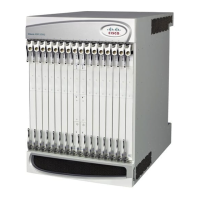them. The session is established with a three-way handshake, and is torn down the same way. Authentication
may be enabled on the session. A choice of simple password, MD5 or SHA1 authentication is available.
Overview of BFD Support
BFD does not have a discovery mechanism; sessions must be explicitly configured between endpoints. BFD
may be used on many different underlying transport mechanisms and layers, and operates independently of
all of these. Therefore, it needs to be encapsulated by whatever transport it uses.
Protocols that support some form of adjacency setup, such as OSPF or IS-IS, may also be used to bootstrap
a BFD session. These protocols may then use BFD to receive faster notification of failing links than would
normally be possible using the protocol's own keepalive mechanism.
In asynchronous mode, both endpoints periodically send Hello packets to each other. If a number of those
packets are not received, the session is considered down.
When Echo is active, a stream of Echo packets is sent to the other endpoint which then forwards these back
to the sender. Echo can be globally enabled via the bfd-protocol command, and/or individually enabled/disabled
per interface. This function is used to test the forwarding path on the remote system.
The system supports BFD in asynchronous mode with optional Echo capability via static or BGP routing.
On an ASR 5500 one of the packet processing cards must be configured as a demux card in order for BFD
to function. See the Configuring a Demux Card section in the System Settings chapter for additional
information.
Important
Configuring BFD
This section describes how to configure and enable basic BFD routing protocol support in the system.
There are several factors affecting the configuration of BFD protocol:
•
Configuring a BFD Context, on page 288
•
Configuring IPv4 BFD for Static Routes, on page 288
•
Configuring IPv6 BFD for Static Routes, on page 288
•
Configuring BFD for Single Hop, on page 289
•
Configuring Multihop BFD, on page 289
•
Scaling of BFD, on page 290
•
Associating BGP Neighbors with the Context, on page 290
•
Associating OSPF Neighbors with the Context, on page 290
•
Associating BFD Neighbor Groups with the BFD Protocol, on page 290
•
Enabling BFD on OSPF Interfaces, on page 291
•
Monitoring BFD Connection for ICSR, on page 291
ASR 5500 System Administration Guide, StarOS Release 21.4
287
Routing
Overview of BFD Support

